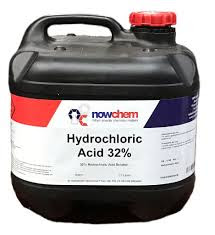Calculate the weight of 25ml of Hydrochloric Acid whose density is 1.18g/ml:
- A. 29.500g
- B. 2.950g.
- C. 0.295g.
- D. 295.00g.
- D. None of the above.
The correct answer is A. 29.500g.
Here's how to calculate the weight of 25ml of Hydrochloric Acid with a density of 1.18g/ml:
Formula:
- Weight = Volume × Density
Calculation:
- Weight = 25 ml × 1.18 g/ml
- Weight = 29.5 g
Therefore, the weight of 25 ml of Hydrochloric Acid with a density of 1.18g/ml is 29.5 grams.
the Calculation of Hydrochloric Acid Weight:
Understanding Density and Weight:
- Density: A measure of how much mass is contained in a given volume of a substance. It is expressed in units of grams per milliliter (g/ml).
- Weight: The force exerted on an object due to gravity. It is expressed in units of grams (g).
The Formula for Calculating Weight:
- Weight = Volume × Density
This formula states that the weight of a substance is equal to its volume multiplied by its density.
Applying the Formula to Hydrochloric Acid:
In this case, we have:
- Volume = 25 ml
- Density = 1.18 g/ml
- Weight = 25 ml × 1.18 g/ml
- Weight = 29.5 g
Therefore, the weight of 25 ml of hydrochloric acid with a density of 1.18 g/ml is 29.5 grams.
Additional Considerations:
- Accuracy of measurements: The accuracy of the calculated weight depends on the accuracy of the volume and density measurements.
- Temperature and pressure: The density of a substance can vary slightly with changes in temperature and pressure.
- Units: Ensure that the units for volume and density are consistent (e.g., both in milliliters and grams per milliliter).
Practical Applications:
The ability to calculate the weight of a substance based on its volume and density is essential in various fields, including:
- Chemistry: Determining the concentration of solutions.
- Physics: Calculating the mass of objects with irregular shapes.
- Engineering: Designing and manufacturing products with specific weight requirements.
- Everyday life: Understanding the weight of common substances.
By understanding the relationship between volume, density, and weight, you can solve a variety of practical problems and calculations.
